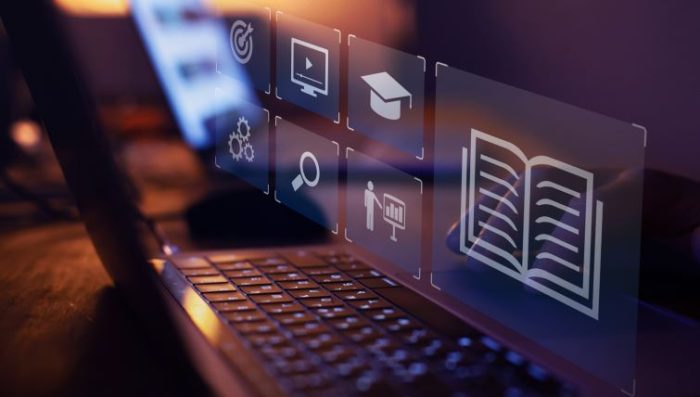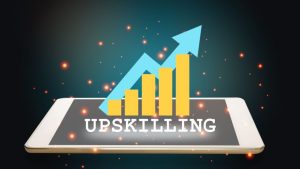Adaptive Learning Technologies: Personalizing Education for Career Success
 Publié le 10 November 2023
Publié le 10 November 2023
The use of adaptive learning technologies allows for personalizing education for career success, leading to greater professional achievements.
Equal access to resources has for a long time been seen to be enough to ensure equitable education for all. But this notion is changing gradually. Many educators now appreciate the undeniable impact of individual learner differences in the teaching-learning process. Individual learner differences result from differences in needs, abilities, and interests.
In other words, it’s now a widely accepted reality that, even with equal access to resources, each student learns at their own pace and in their unique style. Education cannot, therefore, be equitable unless each learner is provided with appropriate resources that align with their unique abilities and needs. organizations should always encourage learning as it will lead to an improved workplace. This calls for the need for personalizing education for career success. That’s where adaptive learning technologies come in.
Adaptive Learning Technologies: What is It?
Adaptive learning is an educational technology that tracks, collects, and analyzes individual learners’ data with the help of artificial intelligence (AI). The data is usually along the lines of engagement levels for a given topic, task performance, comprehension progress, etc. The individual learner can be anyone from a college student to a trainee under a career progression program. Upon analyzing data, adaptive learning systems use it to personalize learning experiences for individual students based on an individual’s learning needs, style, and abilities.
Examples of Successful Adaptive Learning Models
From the definition of adaptive learning technologies, you can tell that its application cuts across all educational environments – both formal and informal. Here are common examples of cutting-edge adaptive learning tools:
i. Duolingo
Duolingo is a popular platform for learning vocabulary and grammar, particularly for non-native speakers. Duolingo uses adaptive learning algorithms to measure learner performance, adjust lesson difficulty, pace learning, and generate targeted feedback. Considering how competitive today’s job market is, multilingualism is key to job search success. This tool is an example of the critical role that adaptive learning can play in anyone’s career progression.
ii. Osmosis
This all-in-one adaptive learning platform is specially designed for medical curriculum and instruction. It has visual learning materials that help nursing and other medical students prepare for boards and exams. Practicing physicians, registered nurses, and other health professionals also use Osmosis for lifelong learning. Even patients can use the platform to learn about different symptoms because of how well it breaks down complex health topics. Whether you’re curious about complex topics such as anatomy or something as simple as what are skin lesions, this platform has you covered.
iii. Mathspace
This adaptive math program offers video modules to help learners pace themselves when studying complex math concepts. Mathspace also offers customized interactive activities, practice problems, and supplement quizzes designed to power student comprehension.
The Impact Of Adaptive Learning Technologies On Education
Adaptive education brings together 4 key technologies to create a personalized learning environment for each learner:
- Artificial intelligence (AI): Used to gauge a student’s learning style, progress, pre-existing knowledge, weaknesses & strengths, etc. and then provide relevant customized support.
- Gamification systems: Adaptive learning tools use gaming components to make learning more immersive, engaging, and fun, consequently enhancing the students’ learning experience.
- Streaming and archived video: These help students to attend classes remotely and to revise previously learned concepts at their own time, pace, and convenience.
- Immersive mixed reality: This one allows educators to place digital objects in the learner’s physical world. For example, a learner may use a mixed reality headset like Microsoft HoloLens in a physical classroom to investigate Newton’s Second Law of Motion.
The combination of these technologies has far-reaching impacts on the teaching-learning process. Whether you’re a teacher or a student, this combination of technologies will make your work a lot easier and more enjoyable. The same goes for HR professionals looking to step up their training game.
Here are a few notable impacts of adaptive learning on corporate training, classroom environment, and learning in general:
1. Providing big data insights
Adaptive learning technologies leverage big data analysis to turn high-volume data from an individual’s learning journey into actionable insights. These insights help the system understand a learner’s content consumption and retention abilities. The system also understands possible vulnerabilities that might inhibit effective learning.
Some of the ways the system can collect and analyze big data include administering quizzes and tracking video engagement data. Video engagement data tells the system how long a learner took before moving on from a video. How many times did the learner pause or replay the video, for example? That alone can help the system estimate the best learning pace and most helpful content to recommend for a given learner.
Bottom line: Thanks to big data analytics and insights, adaptive learning technologies are able to automatically adjust learning models and materials to the learner’s changing needs over time.
2. Automation
Automation in any field minimizes human error and sets the stage for peak performance. Adaptive learning tools combine analytics, intelligence, and automation to enhance efficiency in some of the traditional teachers’ roles. For example, the system can automate the administration, marking, and grading of personalized follow-up and continuous assessment tests.
3. Better time management
Adaptive learning happens in a time-efficient manner. Students or corporate trainees learn at their own pace, schedule, and convenience. Unlike in a traditional classroom environment, adaptive education doesn’t require educators and learners to navigate scheduling conflicts. That saves time and makes for better time management. Additionally, adaptive learning systems point educators to the areas where each learner needs the most help. Minimal time is wasted on material that learners have already mastered or can easily master without help.
4. Interactive Labs
Through adaptive learning tools (e.g. Pearson Interactive Labs), science students can participate in authentic scientific settings over the internet. Online learners get the full laboratory experience, from forming scientific hypotheses, collecting and examining data, drawing conclusions, reporting on their observations, and more. Adaptive learning also allows instructors to create customizable laboratory tasks as per individual learners’ specific needs.
Benefits of Personalized Learning Using Adaptive Technologies
Adaptive learning technologies can be used for personalizing education and career success by creating a more efficient and effective learning process. This will provide multiple benefits for workers and employers alike. Here are a few notable benefits.
1. Enhancing retention
One common feature of most adaptive learning tools is spaced repetition. Spaced repetition allows learners to retain new information more effectively. The tools also use gamification to motivate learners in a natural, authentic, and fun way, which enhances retention and reduces boredom.
2. Real-time feedback
Adaptive learning technologies provide instructors with real-time data that helps them understand each student’s learning path better. Instructors can, therefore, react to the demands of their learners in real-time and provide constructive feedback to help them improve. This is the best way to meet both professional goals and business targets.
3. One-on-one support
One-on-one personalized learning paths are particularly essential for effective remote learning. With big data analytics, instructors are able to spot learners who have difficulties comprehending given course material. That helps them offer one-on-one support to those who need it most, allowing everyone to reach their potential.
4. Learning in motion
Remote working and online learning are rapidly becoming an integral part of our lives. That’s why HR managers looking to build a solid technology roster have to consider a tool’s remote accessibility before buying it. It’s with this realization that adaptive learning technologies are optimized for remote access. They are based on the cloud, which gives students and instructors increased mobility. A learner can attend classes via a tablet or a smartphone from halfway across the world.
5. Continuous Improvement
Adaptive education has a higher ceiling than physical classrooms. The technology is still in its early stages but we can already see the huge potential. The potential will grow continuously as more inventions and investments are made within the education tech space. Also, the users of this technology will continuously identify and recommend improvements that will potentially improve its reach and efficiency.
The final word
The teaching-learning process has evolved over the years as a result of rapid tech innovation and development. Adaptive learning technologies can be used for personalizing education for career success, and are one of the key technologies that are revolutionizing the education sector. Among many other benefits, the technology has made it possible to create personalized learning experiences. The impact of personalized learning on both learning outcomes and career growth cannot be overemphasized.







